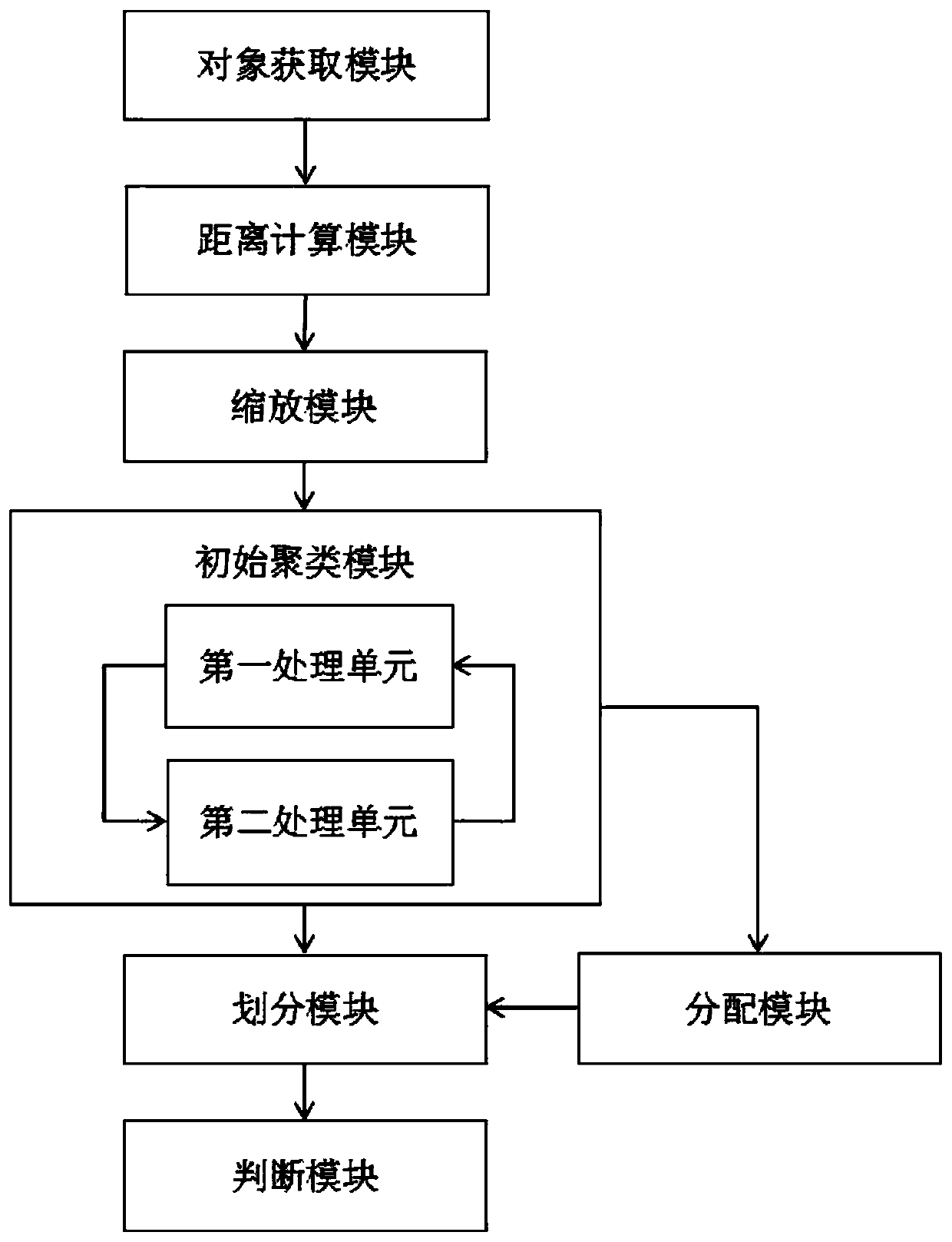Three-branch clustering method and system based on improved DBSCAN
A clustering method and clustering technology, applied in the field of data processing, can solve problems such as difficult to fully explain the relationship between objects and classes
- Summary
- Abstract
- Description
- Claims
- Application Information
AI Technical Summary
Problems solved by technology
Method used
Image
Examples
Embodiment 1
[0045] Reference attached figure 1 This embodiment provides a three-branch clustering method based on improved DBSCAN, which includes the following steps:
[0046] S01. Obtain a set of clustering objects; specifically, obtain objects that need to be clustered, and establish a finite and non-empty set of n clustering objects, denoted as V, where each object has h attributes.
[0047] S02. Calculate the Euclidean distance of any two objects in the clustered object set to obtain the similarity matrix of all objects; specifically, for any two objects x and y in V, use the Euclidean distance formula to get The Euclidean distance between x and y is denoted as d(x,y). The value of d(x,y) represents the similarity of objects x and y. From this, the similarity matrix of all objects can be obtained, Denoted as D. Among them, D=[d(x,y)] n*n , D max Is the largest Euclidean distance in D, d max =max x, y∈V d(x,y).
[0048] S03. Use the scaling function to recalculate the similarity matrix...
Embodiment 2
[0077] Reference attached figure 2 This embodiment provides a system for implementing the three-branch clustering method based on the improved DBSCAN provided in the above embodiment 1, which includes: an object acquisition module, a distance calculation module, a scaling module, an initial clustering module, and a division module , Judgment module and allocation module, the initial clustering module includes a first processing unit and a second processing unit.
[0078] Among them, the object acquisition module is used to acquire a clustering object set.
[0079] The distance calculation module is used to calculate the Euclidean distance of any two objects in the clustered object set to obtain the similarity matrix of all objects.
[0080] The scaling module is used to recalculate the similarity matrix using the scaling function to obtain the scaling distance matrix; the scaling function adopted by the scaling module is denoted as r(x), and the calculation formula of r(x) is as fol...
PUM
 Login to View More
Login to View More Abstract
Description
Claims
Application Information
 Login to View More
Login to View More - R&D
- Intellectual Property
- Life Sciences
- Materials
- Tech Scout
- Unparalleled Data Quality
- Higher Quality Content
- 60% Fewer Hallucinations
Browse by: Latest US Patents, China's latest patents, Technical Efficacy Thesaurus, Application Domain, Technology Topic, Popular Technical Reports.
© 2025 PatSnap. All rights reserved.Legal|Privacy policy|Modern Slavery Act Transparency Statement|Sitemap|About US| Contact US: help@patsnap.com



